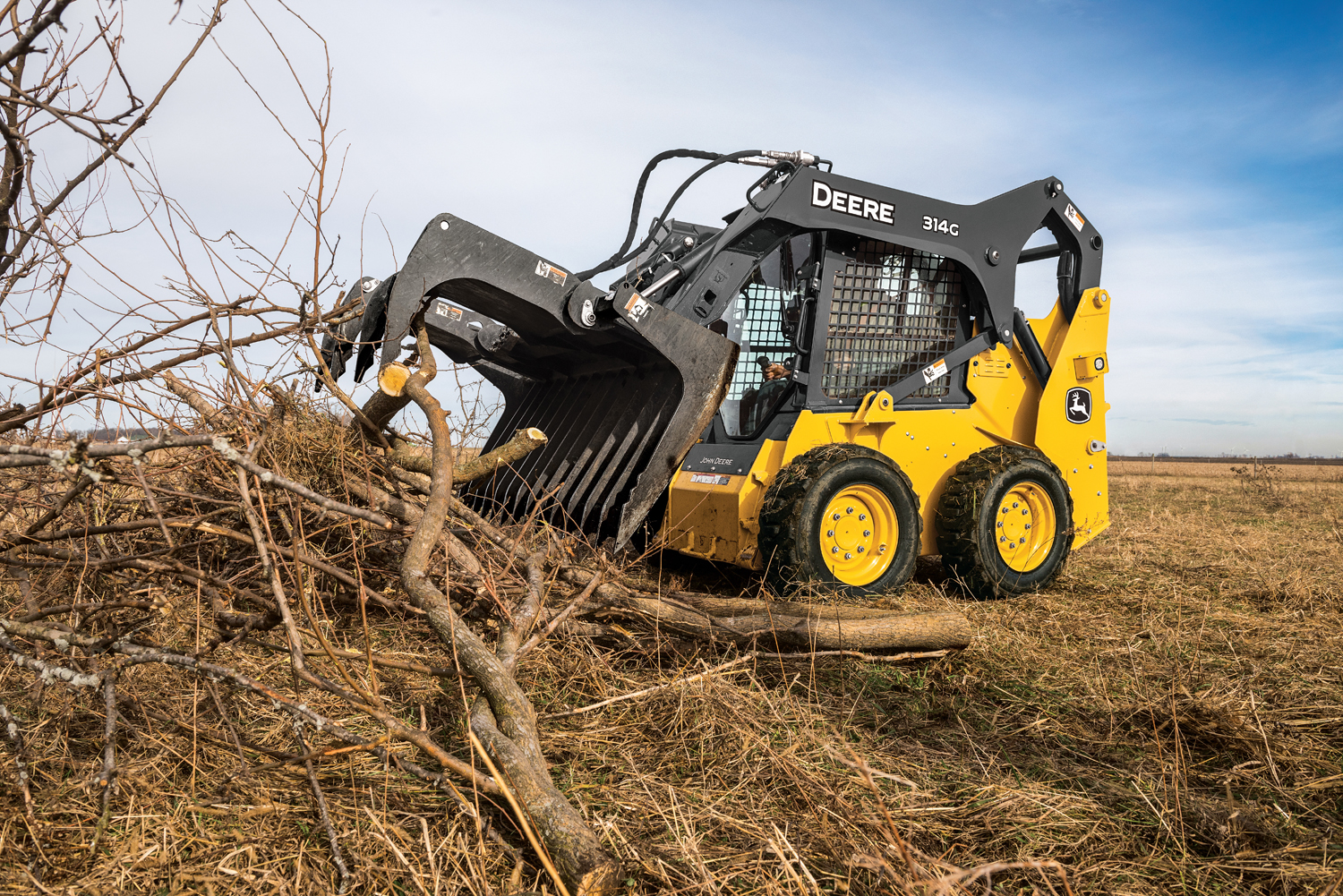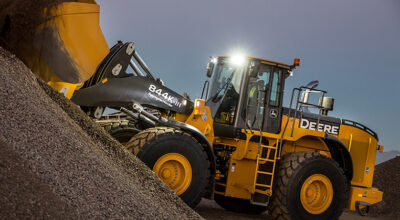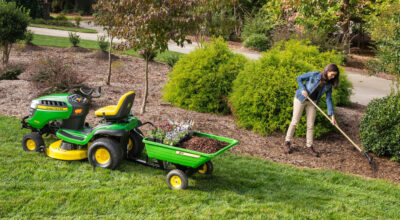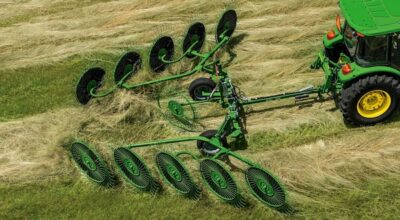Root rakes are designed to pick up bulky, unusually-shaped, or long materials while leaving the soil and small rocks behind. After the large debris is moved, the root rake can also be used to remove roots and other debris from beneath the soil.

Now that we understand what a root rake is used for around the property, let’s take a look at how to install, operate, and maintain the equipment.
Installing a Root Rake
When attaching a root rake to a piece of John Deere equipment, you will need to maneuver the machine so the Quik-Tatch™ lines up with the mounting plate on the back of the attachment. Tilt the attachment back and latch the Quik-Tatch. Before operating the attachment, be sure its latches are secure by pressing it on the ground.
Next, you will need to connect the hydraulic hoses. Before connecting any couplers to the machine, it’s critical to clean both ends of the connectors so contaminants will stay out of the hydraulic system. Connect to the return line first. This will take some of the pressure off the hydraulic system, making it easier to connect to the supply line.
Operating a Root Rake
With the root rake installed properly, it’s time to operate the equipment. When you’re using the root rake to remove roots, angle the teeth so that they dig just beneath the ground’s surface. The root rake can be kept closed to push material when needed.
Maintaining a Root Rake
Like any piece of equipment or machinery, regular maintenance is key to the longevity and safe operation of any attachment. You should be sure to inspect the attachment for leaks in cylinders and hoses on a daily basis. Before operating, make sure the root rake is in good working order. Remember, the attachment should be lubricated after every 40 hours of operation (there are eight grease points on the attachment).
Final Thoughts
A root rake can be extremely helpful when you have large piles of debris to move, or roots to remove from beneath the soil’s surface. Contact your local John Deere dealer for more information about root rakes or other debris removal equipment.
If you enjoyed this post or want to read others, feel free to connect with us on Facebook, or Twitter!


